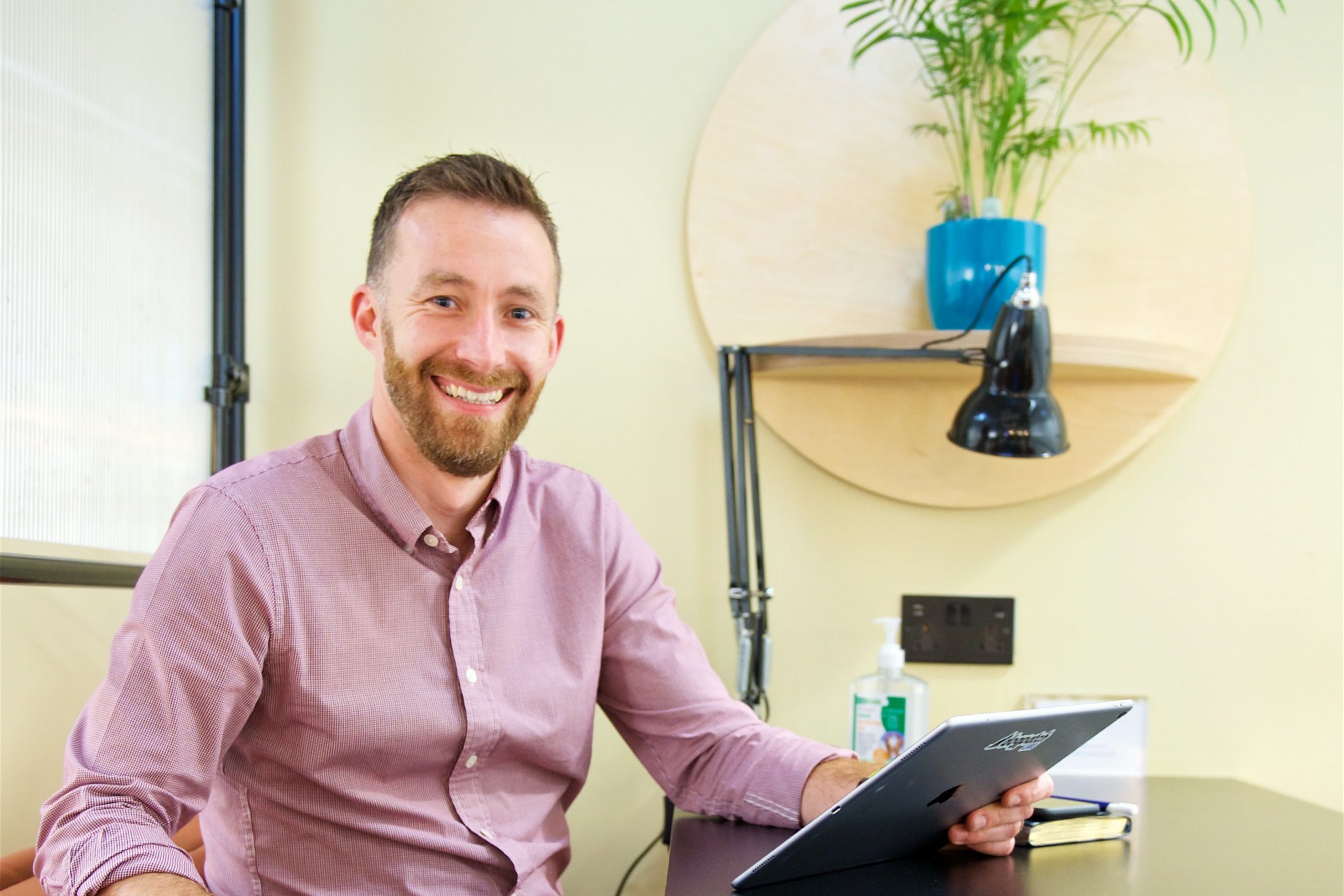THE Covid-19 pandemic has brought about many changes in the way we live and work – some of which could be long-lasting.
RBS International – one of the Island’s biggest employers – recently announced such a change, namely a permanent shift to hybrid working which will see employees blending time doing their jobs both at home and in the office.
The move will involve a dramatic refurbishment of the bank’s Bath Street headquarters, due to complete next month, while its Broad Street office will not reopen due to reduced need for floorspace.
Richard Bolingbroke, managing director for international, retail and commercial banking, explained that the planned new working environment of shared desks, break-out areas, smartboards and Zoom meeting rooms was essential for the transition.
‘It’s about creating the environment where people feel that they can then go and engage and connect with each other,’ he said.
‘One of the things we’ve started to adapt to more within the bank is “agile ways” of working, which is really about staff coming together and working quickly and collaboratively across teams, ideating and thinking about innovation.
‘That change in environment can be what sparks innovation and creativity – an environment where people feel that they can have those open discussions. Also, people need to log into their workstations and they might need to spend an hour or two writing a paper or getting work done or getting through some emails, so there will be the ability for people to do that. But at the same time we won’t be swamping the office with workstations. Instead, we’ll have more open areas, meeting areas, huddle areas and that sort of stuff.’
Mr Bolingbroke said that the challenges brought about by the pandemic, where most staff had to work from home, had played a huge part in developing the new system of working in the bank.
‘We found that this agile way of working is a brilliant way of having ultimate customer focus,’ he said.
‘During the pandemic, we had to quickly mobilise a lot of initiatives to get support to customers quickly. That involved frontline teams, branch workers, relationship managers, risk teams, finance teams, technology teams. As an organisation we were set up with very clear structures of teams and what happened during the course of last year is that we broke down some of those natural barriers that we’d created for ourselves.’
He added: ‘We created these agile teams where it doesn’t matter who you work for or what team you’re in – you’re part of a squad now that’s got to deliver something for customers within, perhaps, the next two weeks. That worked brilliantly and our colleagues absolutely loved it. What we’re looking to do now is create more agility within the organisation. In terms of the new ways of working, the new office design is a trigger in our mindsets as leaders and as colleagues to say, “Right, I’m going to work differently. Now I’ve got to move myself my mindset from what it was two, three years ago into what it is now and the new way of working”.’
Looking to the future, Mr Bolingbroke said that he believed that the hybrid working model would be adopted across the banking sector.
‘I think it’s something that we’re seeing playing out across the banks. Definitely,’ he said.
‘Obviously every bank has a different approach and not all will be the same as ours. Some will encourage more colleagues to come in the offices.
‘Certainly for us, we find this new model works. We’re fortunate in a way that when the pandemic hit last year, we had the technology to quickly enable everyone to set up work from home and provide colleagues with laptops, screens, desks and chairs, if they didn’t have the basics to be able to work from home. That worked well and quite quickly, we realized we could run the bank with people working from home.’
He added that the new style of working was popular with customers too and had enabled new ways of client interaction.
‘Our customers have been more and more inclined to bank with us digitally as well,’ he said.
‘In the same way that internally we might have a Zoom or Teams meeting we’re now enabled through technology to be able to do a mortgage interview or similar meeting with a customer. It’s all about how they bank with us and how we service them.’






